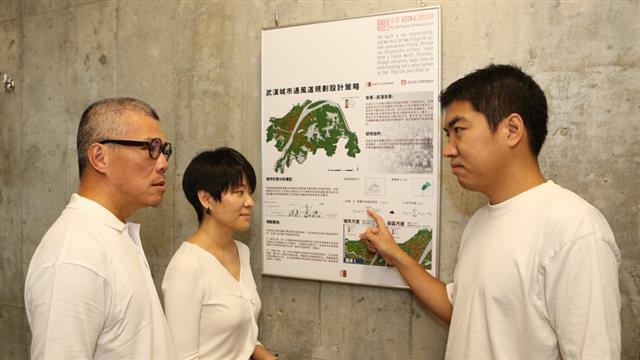In 2012, Prof. Ng Yan-yung Edward from the School of Architecture and his research team were invited by the Wuhan Land Resources and Planning Bureau to start a research study on the planning and management of urban ventilation corridors in Wuhan. By employing a geographic information system (GIS) platform, Professor Ng's study for the Wuhan Municipal Government analyses the prevailing wind directions in the city, calculates the surface roughness and frontal area density of urban structures and visualizes the wind permeability in urban areas. The Wuhan Municipal Government has subsequently incorporated the planning of urban ventilation corridors into its official regulatory framework for the first time.
Preliminary analysis showed that wind speed is rather low (2.7 m/s for most of the time) in Wuhan, particularly in the most densely built areas in Hankou. After the implementation of the Wuhan Urban Ventilation Corridor Plan, several air paths will be preserved in densely built Hankou while overall building density will be of particular focus in areas of lower building density such as Wuchang and Hanyang.
A wide range of research studies about urban ventilation corridors have been carried out in order to improve urban air quality and street-level thermal comfort in western countries. Chinese cities have recently experienced rapid urban development. This results in the frequent occurrence of dust haze events which affect approximately one-seventh of urban areas and cause deterioration in public health. There is an increasing public demand to preserve urban ventilation corridors in order to disperse such dust hazes.
For details, please click here.


